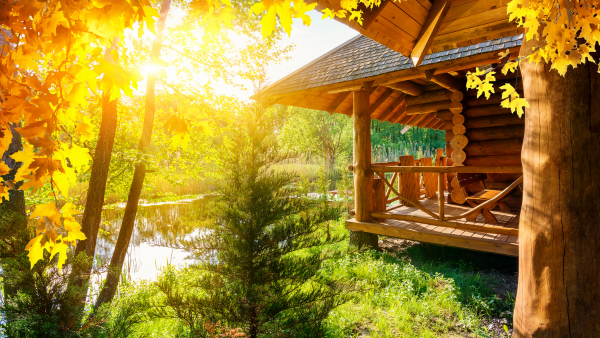In Canada, wildfires are common between May and September, and can even be earlier in some parts of the country. The federal government said it expects higher-than-normal fire activity across most of Canada through August this year. The wildfire season in Ontario has been extended until October 31, 2023.
We’ve seen our fair share of wildfires this year and the devastation it brings. When such extreme events occur, insurance can be the least of our worries as people prepare for the worst and are being evacuated from their homes.
Does home insurance cover fire damage?
Most home and business insurance policies cover damage caused by fire, even if the fire began on a neighbouring property. It excludes coverage if the fires were started intentionally by the policyholder or a member of the household.
Standard homeowners/condos/tenants insurance policies typically provide coverage for smoke damage resulting from covered perils such as fire. If smoke damage occurs as a result of a covered event, such as a fire within the home or neighbouring property, the policy will include provisions for repair or replacement of damaged property, as well as cleanup and restoration expenses.
What about wildfires?
Almost every insurance policy across Canada covers wildfire risk, and coverage is not limited in any way. Fires are still considered an accident in this country and predictions cannot be made as to what homes will be affected. Even though most fires are man-made it will not affect policy coverage at all, no matter how it starts.
Even though home insurance policies cover damage by fires, including wildfires, it’s important to check your auto insurance coverage because damage to your vehicles caused by fire is not mandatory and may be optional. If your car has comprehensive coverage then fire damage will be insured.
When to make a claim?
It is advisable to make your claim as soon as you are safe to do so. Most insurance companies have 24/7 claim service and “catastrophe teams” sent to affected areas to help people file claims in person.
Steps to making a claim:
A fire claim is a series of documents that states the event, how it took place, and the cost of the damaged property. It is recommended to detail your claim as much as possible:
- Notify your insurance broker and/or insurance company
- Make a list of all the damaged property
- Take photos of damaged property/items
- If possible, find receipts and warranties of damaged items
- Keep all expense receipts related to clean-up
- Keep all receipts of living expenses if your home is uninhabitable
When in a potential wildfire evacuation situation, take photos of each room, closets, basement and outdoor storage. This will greatly assist your adjuster and expedite the process when it comes time to get back in your home and start replacing belongings.
Evacuation and additional living expenses
Most home and tenant insurance policies cover ‘additional living expenses’, which can extend up to 30 days, or a dollar amount, depending on your carrier.
It would include reimbursement for temporary accommodation and extra expenses while away from your home. It is important to keep all the receipts during this time for your insurance company.
Additional Living Expenses (ALE) are for people who are unable to return to their damaged homes, or lost their homes in the fire and do not apply to evacuation scenarios if there is no damage to your home.
Mass evacuation coverage is for people whose homes are fine but were located in the evacuation zone and forced to leave.
The coverage would be for sudden essential expenses (due to natural disasters or industrial accidents) that require the evacuation of your neighbourhood. It would typically cover short-term expenses such as hotel room, fuel to get there and necessary things that you cannot bring from home.
If you’re unsure what you are entitled to, you can always ask your insurance advisor before you have to go.
Next Steps
After you file your claim, it may take some time to be contacted given the number of people affected by the wildfires. You will be assigned a claims adjuster who will investigate the circumstances of your loss and examine all the documents you provide.
You will then be given a “Proof of Loss” form to complete by your insurance company that will list the property and/or items that have been damaged or destroyed in the fire alongside the corresponding value or cost of the damage or loss.
Most importantly, stay safe
It is important to stay informed by monitoring the weather and your local news outlets as well as your local emergency officials for possible evacuations and wildfire alerts. Keep your vehicle fueled up and have an emergency plan in place, including a plan for pets. Make sure you and your family are safe before proceeding with any fire claims.














